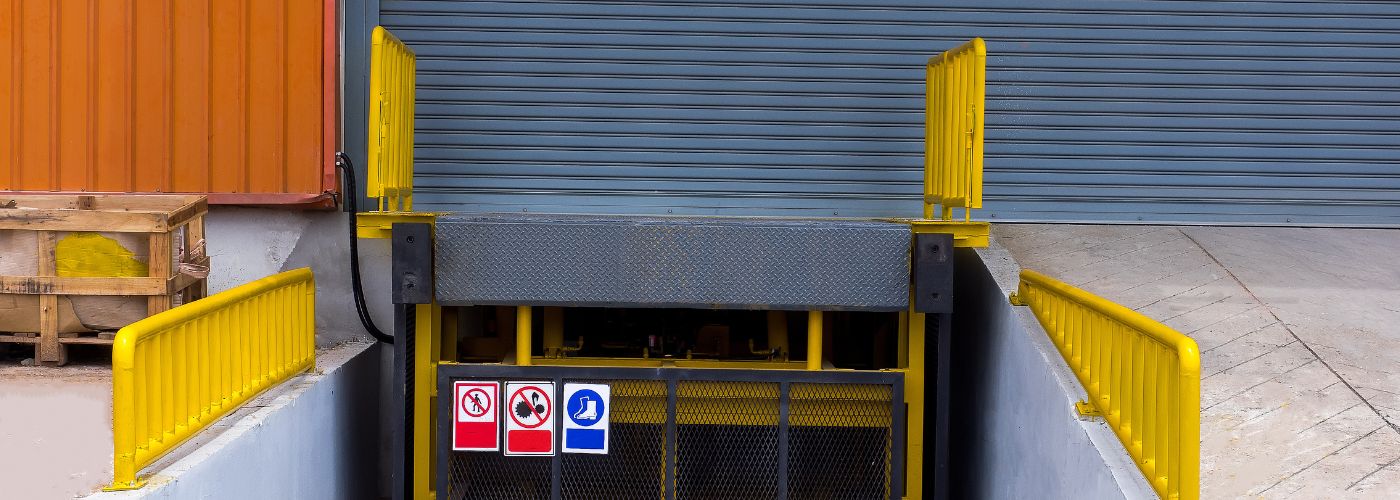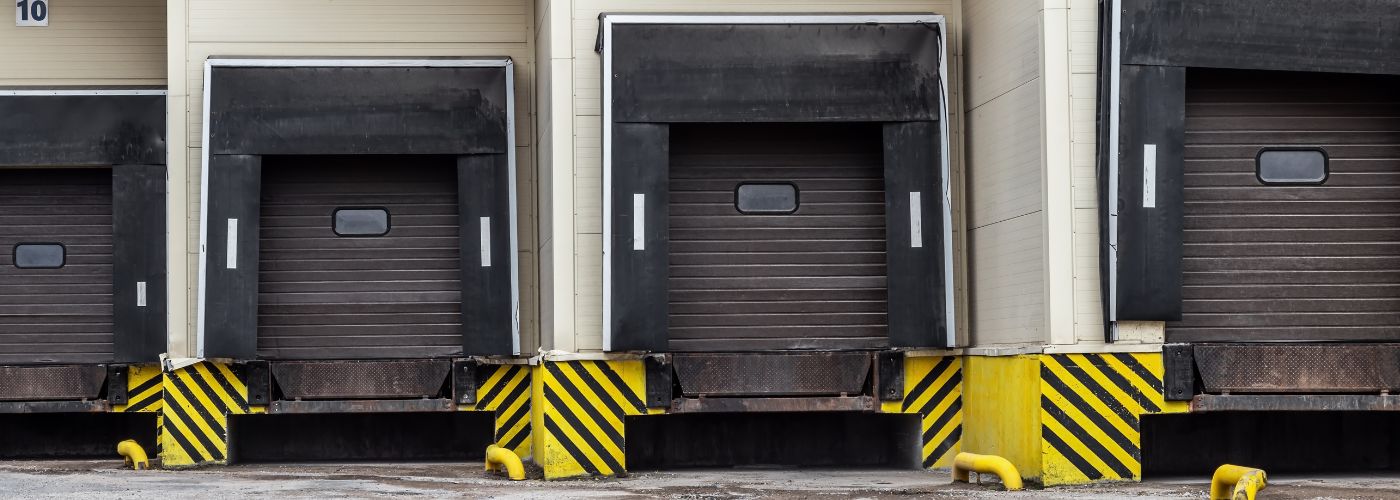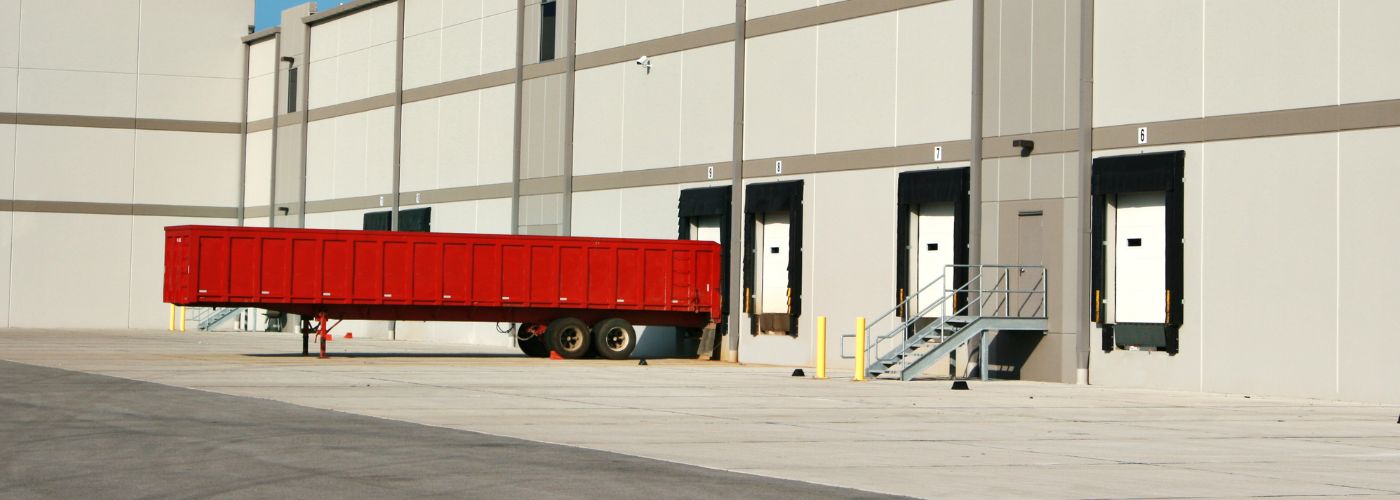Preventing trailer impact damage is crucial for ensuring the safety of your cargo and equipment during transportation. There are several effective strategies to stop trailer impact damage to your loading dock and warehouse. We’ll be going over the best way to stop trailer impact damage in this blog!
How To Stop Trailer Impact Damage with Dock Shelters
One effective way to prevent trailer impact damage to warehouses and loading docks is by utilizing dock shelters.
Installing dock shelters create a tight seal between the trailer and the building, reducing the likelihood of accidental collisions during loading and unloading operations.
By providing a buffer zone for trucks to safely dock against, dock shelters help minimize risks associated with trailer impact damage.
Modern dock shelters come in various materials such as fabric or fiberglass designs, offering flexibility and durability. The use of these advanced shelter systems not only enhances safety but also improves energy efficiency by preventing heat loss and maintaining climate control within the facility.
This dual functionality makes investing in dock shelters a smart choice for businesses looking to protect their infrastructure while optimizing workload!
Choosing the Right Dock Bumpers For Warehouse Safety
When it comes to ensuring warehouse safety, choosing the right dock bumpers is a crucial decision that shouldn’t be taken lightly.
One factor to consider is the type of material used in the construction of the bumper. Opting for durable and impact-resistant materials such as rubber or polyurethane can greatly enhance the effectiveness and longevity of your dock bumpers.
Moreover, selecting the appropriate size and thickness of dock bumpers can make a significant difference in protecting your facility from damage caused by frequent truck deliveries.
Additionally, considering the installation method of dock bumpers – whether it’s bolt-on or weld-on – is vital in ensuring optimal performance and stability.
The difference between the two are: the bolt-on dock bumpers can be easily removed and replaced, offering more versatility in case of damage or wear.
On the other hand, weld-on dock bumpers provide a more permanent solution with greater security but may require professional installation. It is important to evaluate your specific needs and budget constraints when choosing between these two options.
Protecting Your Overhead Door From Trailer Impact Damage
One effective way to protect your overhead door from trailer impact damage is by installing protective barriers such as bollards or guardrails. These physical barriers act as a buffer between the door and any potential impacts, helping to absorb the force and minimize damage.
In addition, regular maintenance and inspections of your overhead door can help identify any vulnerabilities or weaknesses that may increase the risk of trailer impact damage.
Another proactive measure to consider is training employees on safe loading and unloading practices to reduce the likelihood of accidents that could lead to door damage. By emphasizing proper procedures, securing loads effectively, and ensuring trailers are positioned correctly when backing up, you can significantly decrease the risk of impact-related incidents!
Protecting Your Dock Leveler From Trailer Damage
One effective way to safeguard your dock leveler is by investing in durable protective measures, such as dock bumpers and wheel chocks. These simple yet reliable solutions can help absorb the impact of trailers backing up and prevent direct contact with the leveler.
Moreover, regular maintenance checks can also go a long way in ensuring that your dock leveler remains in top condition. By conducting routine inspections for signs of wear and tear, you can address any potential issues before they escalate into major problems.
Remember, prevention is key when it comes to protecting your dock equipment from damage caused by trailers. As such, implementing proactive measures and staying vigilant can ultimately save you time, money, and headaches down the line while keeping your operations running smoothly.
Best Practices For Trailers When Backing In
When it comes to backing trailers into a loading dock, one of the best practices is to always use a spotter. Having an extra set of eyes can help you navigate tight spaces and avoid accidents.
Additionally, it is important to approach the dock at a slow speed and make small adjustments as needed to ensure proper alignment.
Another key practice is to communicate effectively with your team. Make sure everyone involved understands the plan and signals being used for guidance.
Lastly, consider investing in technology such as backup cameras or sensors to assist with precision maneuvering. These tools can provide added confidence and reduce the risk of human error during the docking process.
Maintenance Tips For Your Dock Shelter & Bumper
When it comes to maintaining your dock shelter and bumper, regular inspections are key to ensuring they stay in optimal condition. Check for any signs of wear and tear, such as cracks or missing parts, and address them promptly to prevent further damage.
Additionally, make sure the seals on the dock shelter are intact to provide maximum protection against the elements.
Cleaning your dock shelter and bumper regularly is another important maintenance tip that often gets overlooked. Dirt and debris can accumulate over time, affecting their effectiveness and lifespan.
Use a mild detergent and water solution to clean off any grime, especially in hard-to-reach areas. By incorporating these simple maintenance tips into your routine, you can extend the life of your dock shelter and bumper!


